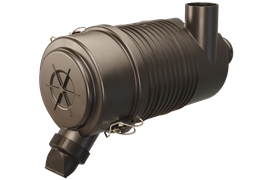Radio versus cab control
18 March 2008
According to remote control specialist Cattron Group International (CGI), a growing number of crane and hoist users are choosing radio remote control (RRC) ahead of cab or pendant control.
“With RRC, the operator is completely free to move into optimum line of sight and safety positions, can walk all around the load, and can view the load from all angles. Although in most applications, the cab operator is safely out of harm's way, the cab operator must rely on hand signals from the floor to operate the crane.
“The hook-up person on the floor is in the most dangerous position in cab operations, as misinterpreted hand signals can lead to serious accidents.”
RRC also provides the “Pitch and Catch” option, using two operators at opposite ends of the warehouse, sending the crane back and forth between them at a maximum safe speed.
Cattron said cab operators for the same task would require three workers.
CGI's newest offering is the Metal Keypad-U (MKU) operator control unit. “It is the first radio remote to combine the robust design requirements of the North American market with European CE safety approvals,” said the company.
Additional features include five bicolour LED indicators on the controller for controller status, including low battery warning and parameter selection, poweron self-diagnostics, keypad audible feedback and low battery indication. A removable contactless RFID key, named TransKey, is programmed with all necessary system configurations. The system operates in the unlicensed 902- 928 MHZ band for North and South America. Other frequency bands are available for Europe and Asia.




